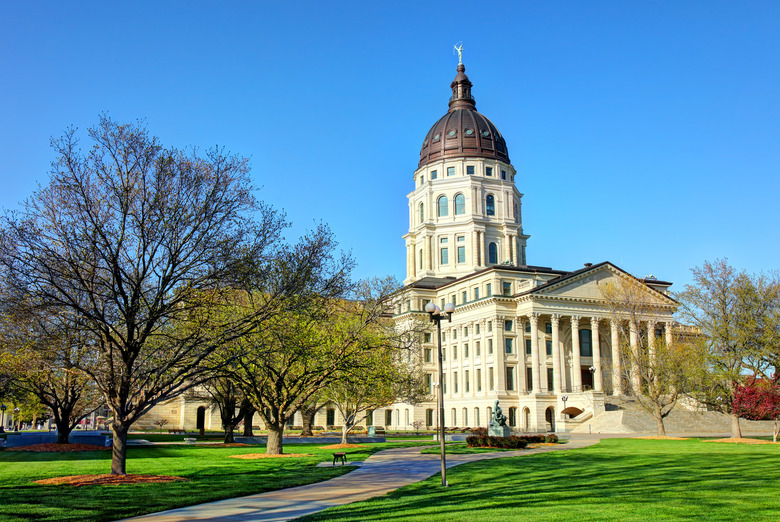What Planting Zone Is Kansas?
The latest Plant Hardiness Zone Map (PHZM) was released by the U.S. Department of Agriculture (USDA) in 2012, and it continues to be the gardener's standard for planting guidance. While the PHZM shows zones 5, 6, and 7 within the Kansas borders, there's still a possibility that your Kansas garden is located in a different microclimate growing zone.
Tip
The USDA plant hardiness growing zones in Kansas generally range from 5b through 7a.
Growing Zones in Kansas
Growing Zones in Kansas
If you're curious about which plants will thrive in a Kansas garden, you don't have to figure it out through trial and error. The USDA PHZM should be your first guide to selecting the plants that will fare best in your garden.
The planting zones are based on the average minimum annual temperatures an area experienced from data collected from 1976 to 2005. The zones span from 1 to 13, and each escalating zone represents a 10-degree-Fahrenheit increase. Each zone is also further subsectioned by "a" and "b" zones.
So what planting zone is Kansas? The vast majority of the state squarely fits in zone 6. You'll find 6a conditions to the north and 6b conditions to the south. However, along the northern state line runs a 5b hardiness zone, and there are a few scarce pockets of 7a zone in Southern Kansas. Because the most recent PHZM was designed for internet use, you can search your ZIP code at the USDA website to find out the specific growing zones in Kansas.
Planting Outside the Hardiness Zones
Planting Outside the Hardiness Zones
Long-time gardeners and horticulturalists in Kansas will have noticed a change in the USDA PHZM. The previous version from the 90s had nearly the entire state in zone 5. This shift to zone 6, however, isn't cause to completely redesign a garden intended for zone 5 plants and flowers.
Treat the PHZM as a guide, not a hard and fast rule. While it's true that you probably shouldn't hope for zone 9 plants to survive in zone 5 climates, plants from bordering zones can still thrive in your garden. The PHZM does not account for microclimates, which can alter your temperatures based on immediate surroundings, like cooler valleys surrounded by hills, ponds that can absorb heat during the day and release it at night, and nearby tall buildings that can alter your immediate temperature.
Alternative Planting Guides
Alternative Planting Guides
For the meticulous gardener, other planting guides based on temperature are out there for use. For example, the Arbor Day Foundation released its hardiness zone map in 2015. This map also places the vast majority of Kansas in zone 6, with pockets of zone 7 to the south, but doesn't include the northern strip of zone 5 like the USDA map does.
Your best guide will be experience and your own eyes. Don't shy away from adding a just-out-of-zone plant because of how the PHZM outlines growing zones in Kansas. Consult with a local nursery for the best advice. And remember, your soil composition, sunlight hours, and watering practices are critical to the success of your garden too.
